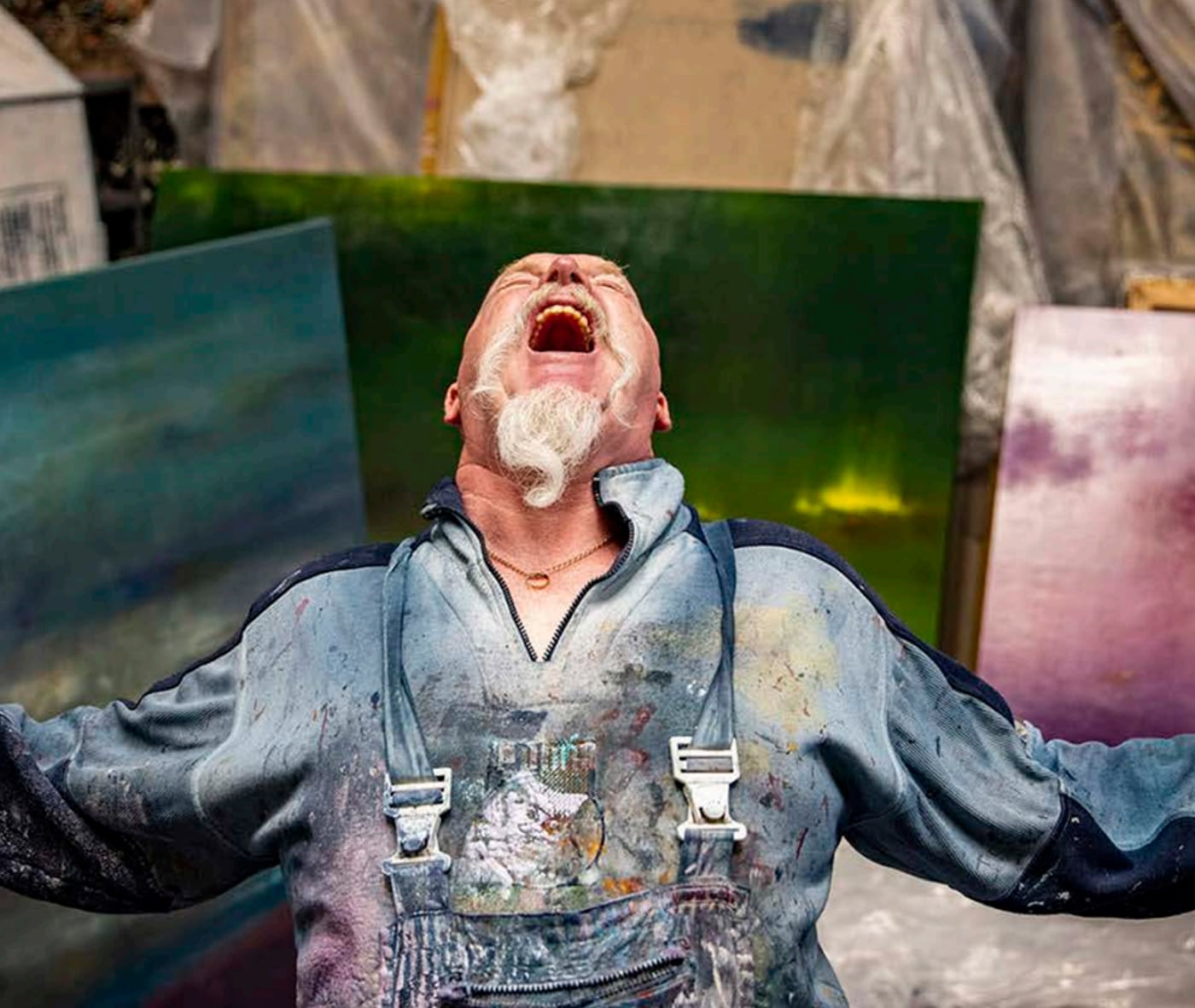
#80
From Creative Visionary to World-Renowned Artist: The Inspiring Journey of Paul Hughes
Paul Hughes is an individual whose unconventional life journey has been marked by numerous successes in various fields.
From his early days as a promising young athlete to becoming an entrepreneur and co-founder of the renowned, multi-Cannes-winning creative agency Rothco, which was later acquired by Accenture in 2017, Paul has consistently demonstrated a unique and innovative approach to life. Today, he is an internationally acclaimed artist.
Paul’s artwork is characterised by a fusion of the post-World War II New York City abstract art movement and his own uniquely expressive techniques, showcasing his adaptability and creative prowess.
With an ever-growing international reputation and a series of successful exhibitions in cities like London, Hong Kong, and Dublin, Paul is now preparing for his upcoming show in New York. This exciting event promises to be yet another significant milestone in his remarkable artistic journey.
Subscribe
Find the show on your favourite player
Summary
02:49 The story behind the founding of Rothco
- Paul fell into advertising by accident, because he wanted to stay in Ireland and keep playing football
- Overtime, from working in the advertising he industry, he would often be solving problems outside of advertising
- It grew into an obsession for Paul to solve problems
- Early day clients included Heinken and Aer Lingus
- “We never saw it as an advertising agency”
- The root of their success was from hiring great talent
13:01 Combining the creative and practical execution of work in advertising
- One of Rothco’s core beliefs was in the team and togetherness
- The cultural DNA is to “push yourself, never settle and find the answers”
- They viewed themselves as gang of human beings, like a soccer team
- Rothco’s clients felt like they were part of the gang
19:12 Why name the agency ‘Rothco’
- It came from playing around when he lived in Saudi Arabia – he was thinking of a name and was inspired by Rothko’s work – “why not change the ‘k’ to a ‘c’?”
- Previously, Paul would visit the Tate Modern on business trips and look at Rothko art for hours
- Paul would keep on staring at the art and notice that it’s always changing
21:22 Rothko’s work as meditative
- Rothko was very serious about his own work
- The great thing about Rothko was the layers of his paint: six layers down is as important as the layer on top
- Paul views art as about the viewer and their interpretation of it
- His painting is a million different paintings to a million different viewers
24:27 The acquisition of Rothco by Accenture in 2018
- Accenture is a growth organization
- Rothco got to the top of their mountain and the founders weren’t interest in opening offices around the world
- They knew it was time to get out of the way – Accenture was the next best step
- The main challenge was the different cultures, but it brought opportunities that Rothco could never get on their own
34:00 Paul’s artistic journey
- “Words like ‘hobby’ hurt me”
- He doesn’t know why or how he started painting, but he always found ways to express himself, for example, he took up knitting when he was a teenager injured from football
- He ever saw his painting as art, but an expression of himself
- “I just wanted to be better, through painting, Rothco, and so on”
- He realised it was a real thing when his wife transformed their bedroom into a studio
- Art was about doing, getting lost in it, then the answers reveal themselves
- His work changed when he saw people engaging with it at his first solo show
- Life and what we do is not a linear line
46:57 The journey to becoming an abstract artist
- Paul never set out to be an ‘abstract artist’
- He had no interest in art that looked like something, but was fascinated by the spontaneity of testing with colours and materials
- 90% of what he does is based on the ground
- He loves the physical act, movement and destruction of painting
- It’s about creating a sense of movement in a static thing
- One of the most difficult things is knowing when to finish
55:52 The role of the audience and personal expression
- If you paint with the audience in your mind, you are working from your head – not your heart – and hee notices when it creeps in subconsciously
- Logic dumbs down things down: it dumbs the art and dumbs it down for the viewer
- It’s the journey of not knowing – “Logic is the enemy of what I do”
01:14:25 On his exhibition Bastard Blue
- For a long time, Paul had a difficult relationship with the colour blue – it never interested him
- He decided to tackle this relationship and understand why he struggled with the colour
- Through the process, he saw so many different pigments
- He create paintings that fascinated him with just blue
- He realised: “The problem is just me, not blue – blue has infinite possibilities”
- “You need colour outside colour to make the colour”
01:17:01 The role of fear
- Fear is the one thing that has held Paul back through moments in his life
- Art has enabled him to trust and overcome his fear
- “Too often we hold ourselves back”
01:26:48 The power of doing
- The process of doing can help you bypass this fear
- He has learnt to trust himself, which takes time
- He believes in the power of practise and the “10 000-hour rule”
- Painting has almost become instinctive for Paul, because of so much practise
- “Nature has a way of hurling an answer at you”
- All my work is absolutely connected
Links